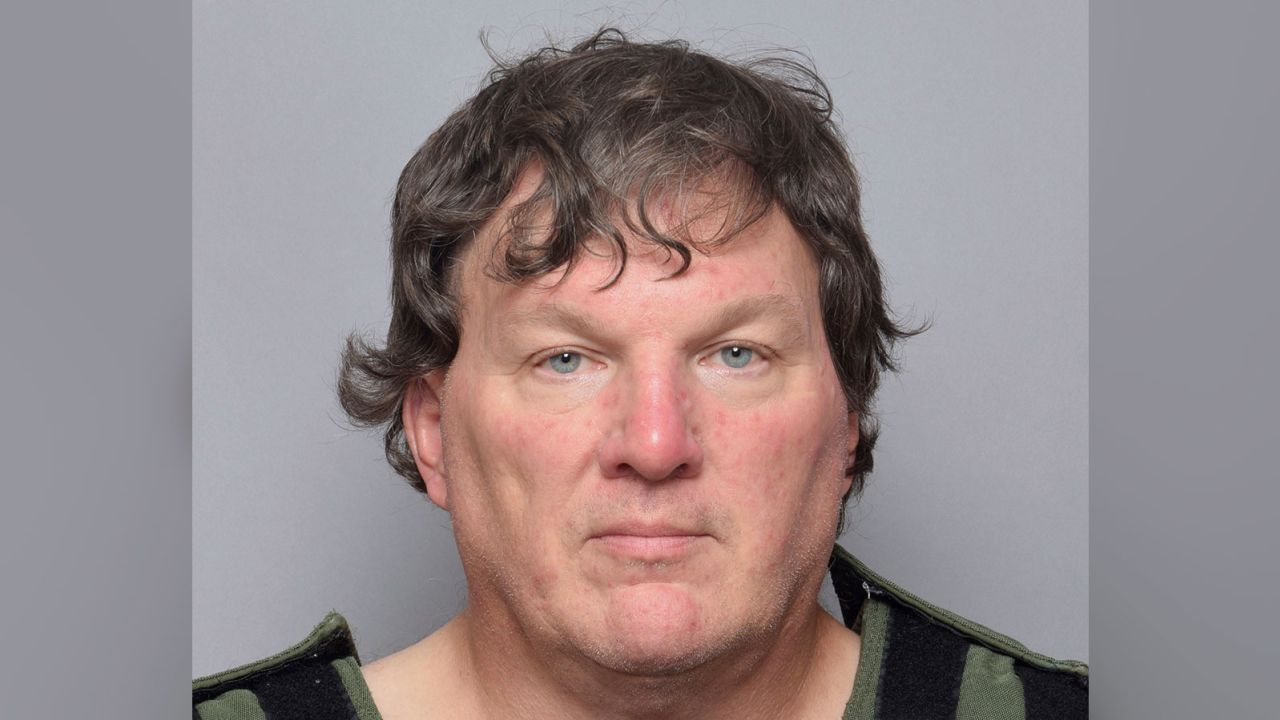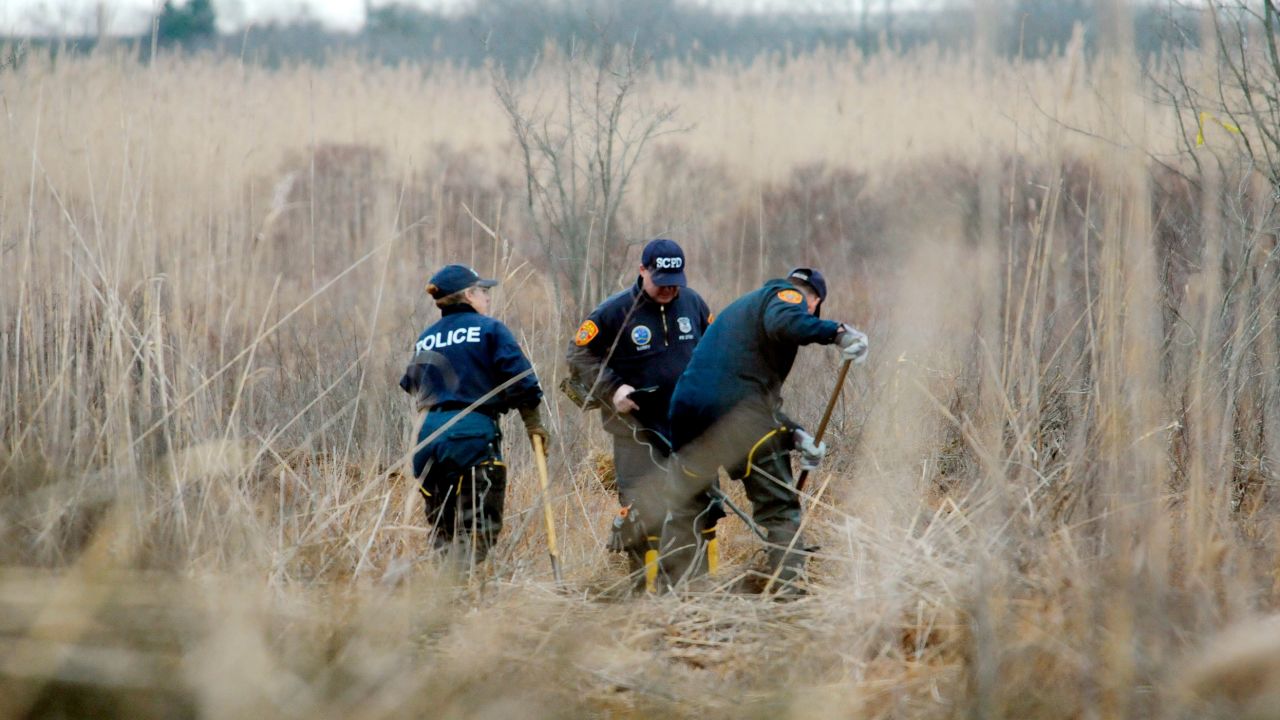Investigators have received a flood of evidence and information related to the suspect charged in some of the Gilgo Beach killings since his arrest Thursday, the Suffolk County District Attorney told CNN on Monday.
“We feel we can prove these three murders,” Ray Tierney said on “CNN This Morning.”
Rex Heuermann, 59, was arrested and charged with murder in the killings of three of the “Gilgo Four,” a group of women whose remains were unearthed near Long Island’s Gilgo Beach in 2010. He has pleaded not guilty to the killings of Melissa Barthelemy, Megan Waterman and Amber Costello.
He is also the prime suspect in the 2007 disappearance and killing of the fourth woman, Maureen Brainard-Barnes, according to a bail application from prosecutors, though he has yet to be charged in the case. “We’re also confident that we’re going to be able to eventually charge that fourth murder,” Tierney said.
Officials found between 200 and 300 firearms in a walled-off vault behind a locked metal door in Heuermann’s basement, according to a source with knowledge of the case.
The stash included pistols, revolvers and semi-automatic rifles. Heuermann was an avid hunter, but the trove was more guns than authorities were expecting – they only knew of 92 that he had registered in the state.
The search of Heuermann’s house in Massapequa Park, Long Island, has largely been focused on forensics, but authorities are also looking for items that could be souvenirs from the killings – things that appear to be hidden or kept in such a way other family members would not have come across them, according to the source.
Investigators also searched a storage unit Heuermann kept in Amityville, Long Island.
The attention garnered by the arrest and the execution of a number of search warrants has prompted a deluge of new details, Tierney said. “Right now, we have a flood of information and a flood of evidence coming in, and it’s going to take us a while to sort of go through all of that.”
“We have a description of the last individual who saw the final victim, Amber Costello, alive that matches that of this defendant, who has a rather unique physical appearance,” he added. “We have phone evidence, and we also have that DNA evidence.”
Heuermann’s DNA was found on one body, and his wife’s DNA was found on two bodies, Tierney said.
“With regard to that DNA and those hairs, it’s either transfer – in other words, one person comes into contact with a second person who then comes into contact with a third person – or, they were at a location where, you know, the family member occupied, whether it’s a car or a house,” Tierney said.
The Gilgo Four are among 11 sets of human remains that were found strewn across Long Island’s South Shore between 2010 and 2011, launching what police have called “one of the most consequential homicide investigations” in the island’s history.
When asked whether investigators expect to connect Heuermann to more victims, Suffolk County Deputy Police Commissioner Anthony Carter said, “As we continue to gather evidence, anything is possible.”
A multijurisdictional task force will continue to investigate Heuermann and the remaining unsolved cases by piecing together years of the suspect’s activities, combing through tip lines and interviewing witnesses, Carter said.

“There’s still an active investigation as to his whereabouts and his conduct from the time that the bodies were discovered right up until Thursday,” the investigator said.
Authorities had Heuermann on their radar for more than a year as investigators gathered enough evidence to make an arrest. But they ultimately decided to arrest him Thursday out of concern that he may have set his sights on another victim, Carter said.
“It was an adrenaline rush,” he said of hearing the arrest was finally happening.
“I knew that this person was a demon,” Carter said. “The fact that we are able to bring some closure and some peace to the families as well as take a violent person off of the streets is rewarding, I think, for everyone.”
A woman who said she was in a networking group with Heuermann told CNN affiliate WABC about a now-haunting conversation, when he asked her if she was familiar with the Gilgo Beach killings.
“And back then I will say ‘Oh you know, he’s just from the area, maybe you know, he’s just a local talking … and would think that I’d find it interesting,’” Dominique Vidal said.
“But now I see it as a serial killer, kind of just putting it in somebody’s face,” she added.
Heuermann also called her and left a voice mail in late February after she left the networking group for architects and designers they were both apart of, she said.
Authorities lay out key evidence
The case began in 2010 when the search for a missing woman led to the unexpected discovery of the Gilgo Four – who were found bound in camouflaged burlap along the same quarter-mile stretch of roadway.
By the time authorities found the remains of the missing woman, Shannan Gilbert, a year later, they had uncovered a total of 11 sets of remains along Long Island’s South Shore – all within miles of Gilgo Beach.
After the cases went unsolved for more than a decade, a multiagency investigative task force was formed in early 2022 to revisit them.
Within weeks, the task force identified Heuermann as a possible suspect, according to Tierney. Investigators then began to surveil him and his family, surreptitiously collected DNA samples and analyzed his phone records for any connection to the killings.
Authorities narrowed thousands of cell tower records down to a handful of people and then began focusing on residents who also matched a physical description provided by a witness who had seen the suspected killer.
Heuermann fitted the witness’s description, lived close to the Long Island cell site and worked near the New York City cell sites where other calls were captured, authorities said.
A key break in the case came when investigators matched DNA from a piece of male hair found on the burlap used to wrap Waterman’s body to a DNA sample taken from a pizza crust Heuermann had discarded in a Manhattan trash can in January.
Heuermann’s internet history included at least 200 internet searches for information about the status of the Gilgo investigation, as well as compulsive searches for photos of the victims and their families, Tierney said.
The records also included searches for violent pornography and depictions of women being abused, raped and killed, the prosecutor said.
Heuermann’s wife and two children were out of state during the times the three women are believed to have been killed, authorities said.
The suspect’s wife and children are cooperating with the investigation, according to Carter.
Investigator describes suspect’s alleged acts as ‘worst case I’ve ever seen’

Heuermann’s alleged actions are among the most disturbing cases he has seen in his career, Carter told CNN.
“I can’t begin to imagine the pain that these families have had to endure over the last decade and to know that this demon was capable of doing such an evil act to these families, it is just, you know, beyond comprehension,” Carter said.
The deputy commissioner repeatedly described Heuermann as a “demon.”
“It’s really hard to get into the mind of somebody that’s capable of committing the crimes that he committed,” Carter said. “He intended to commit these crimes. He intended to cover up these crimes, and the acts that he committed were the worst I’ve ever seen,” he said.
Heuermann lived in the village of Massapequa Park with his family – just across the bay from where the victims’ remains were found.
The suspect, who is a registered architect, has owned the New York City-based architecture and consulting firm, RH Consultants & Associates, since 1994, according to his company’s website.
The investigation is far from over

Despite Heuermann’s arrest in connection to three of the Gilgo Beach homicides, the cases involving several other sets of human remains uncovered in the area around the same time are still under investigation.
“We’re going to continue to work this case and work the entire Gilgo investigation,” Carter said. “The detectives in this case – one thing I really want to say about them – they never quit,” Carter said. “They’ve been working this case for over a decade and they never quit.”